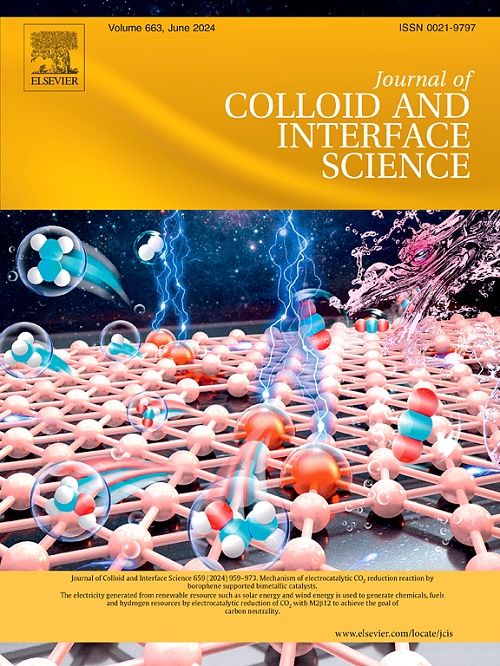Pre-carbonization-mediated construction of urchin-like NiFe2O4 superparticles with enhanced CNT growth for efficient oxygen evolution
IF 9.4
1区 化学
Q1 CHEMISTRY, PHYSICAL
引用次数: 0
Abstract
In this study, we report the rational design and synthesis of carbonized NiFe2O4 superparticles (CarSPs) hierarchically integrated with densely aligned carbon nanotube (CNT) architectures, hereafter denoted as CarSP-CNTs, which exhibit a biomimetic urchin-like morphology. Through exploitation of the colloidal self-assembly and catalytic functionalities inherent to NiFe2O4 nanoparticles (NPs), we achieve seamless integration of one-dimensional CNT arrays with three-dimensional superstructural frameworks. Systematic investigation reveals that the pre-carbonization of surface-bound organic ligands coupled with subsequent CNT growth induces synergistic interplay between conductive carbon matrices and active spinel oxide phases. This structural optimization confers CarSP-CNTs with enhanced charge transfer kinetics and catalytically robust interfaces, as evidenced by their superior electrocatalytic performance for the oxygen evolution reaction (OER) in alkaline electrolyte (1 M KOH). The optimized CarSP-CNTs exhibit a minimal overpotential of 307 mV to deliver a current density of 10 mA cm−2, alongside remarkable operational stability exceeding 20 h of continuous electrolysis. These findings establish a paradigm for the rational design of hierarchically structured, multi-component electrocatalysts through coordinated nanoscale engineering, offering a versatile platform for advancing energy conversion technologies.

求助全文
约1分钟内获得全文
求助全文
来源期刊
CiteScore
16.10
自引率
7.10%
发文量
2568
审稿时长
2 months
期刊介绍:
The Journal of Colloid and Interface Science publishes original research findings on the fundamental principles of colloid and interface science, as well as innovative applications in various fields. The criteria for publication include impact, quality, novelty, and originality.
Emphasis:
The journal emphasizes fundamental scientific innovation within the following categories:
A.Colloidal Materials and Nanomaterials
B.Soft Colloidal and Self-Assembly Systems
C.Adsorption, Catalysis, and Electrochemistry
D.Interfacial Processes, Capillarity, and Wetting
E.Biomaterials and Nanomedicine
F.Energy Conversion and Storage, and Environmental Technologies

 求助内容:
求助内容: 应助结果提醒方式:
应助结果提醒方式:


